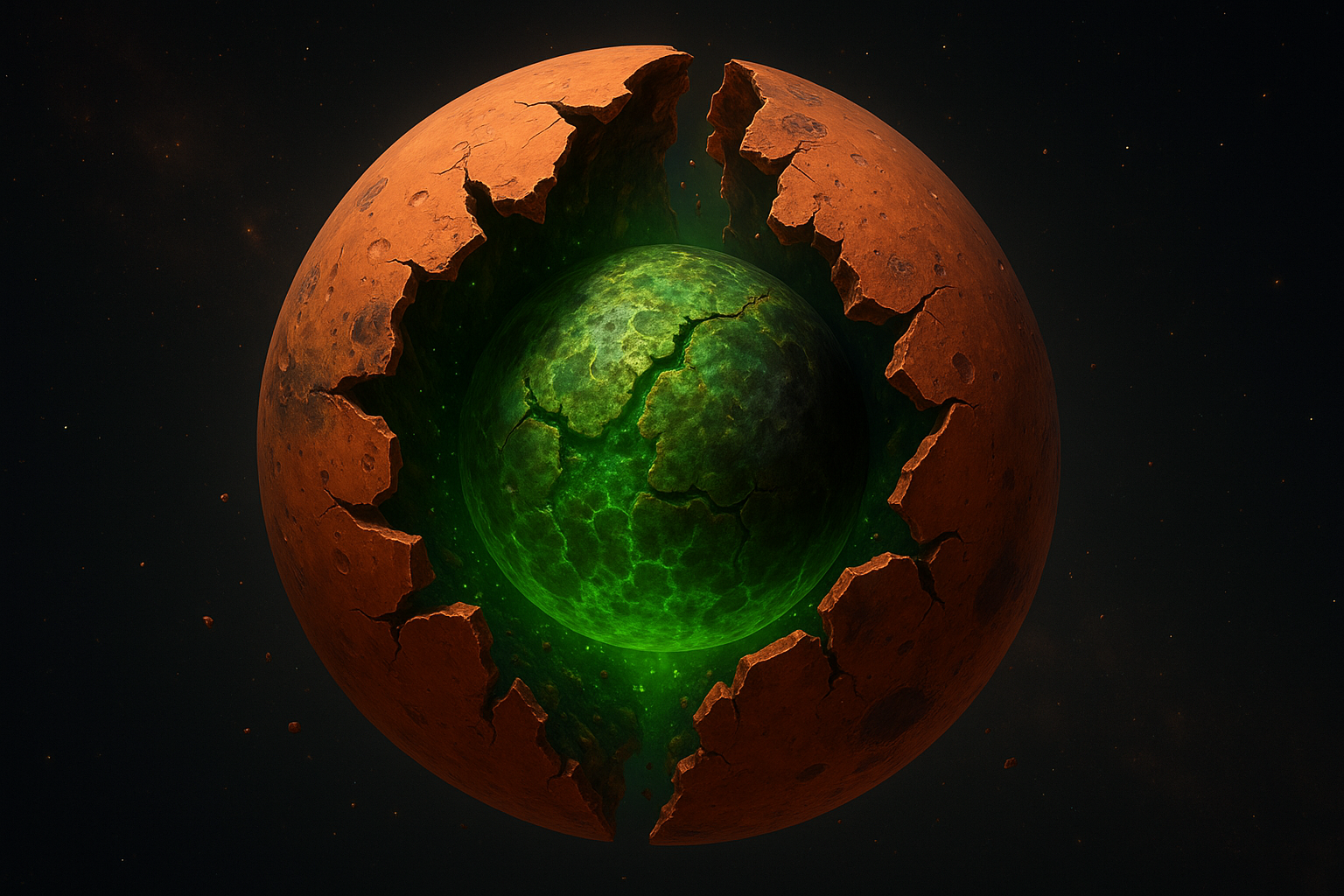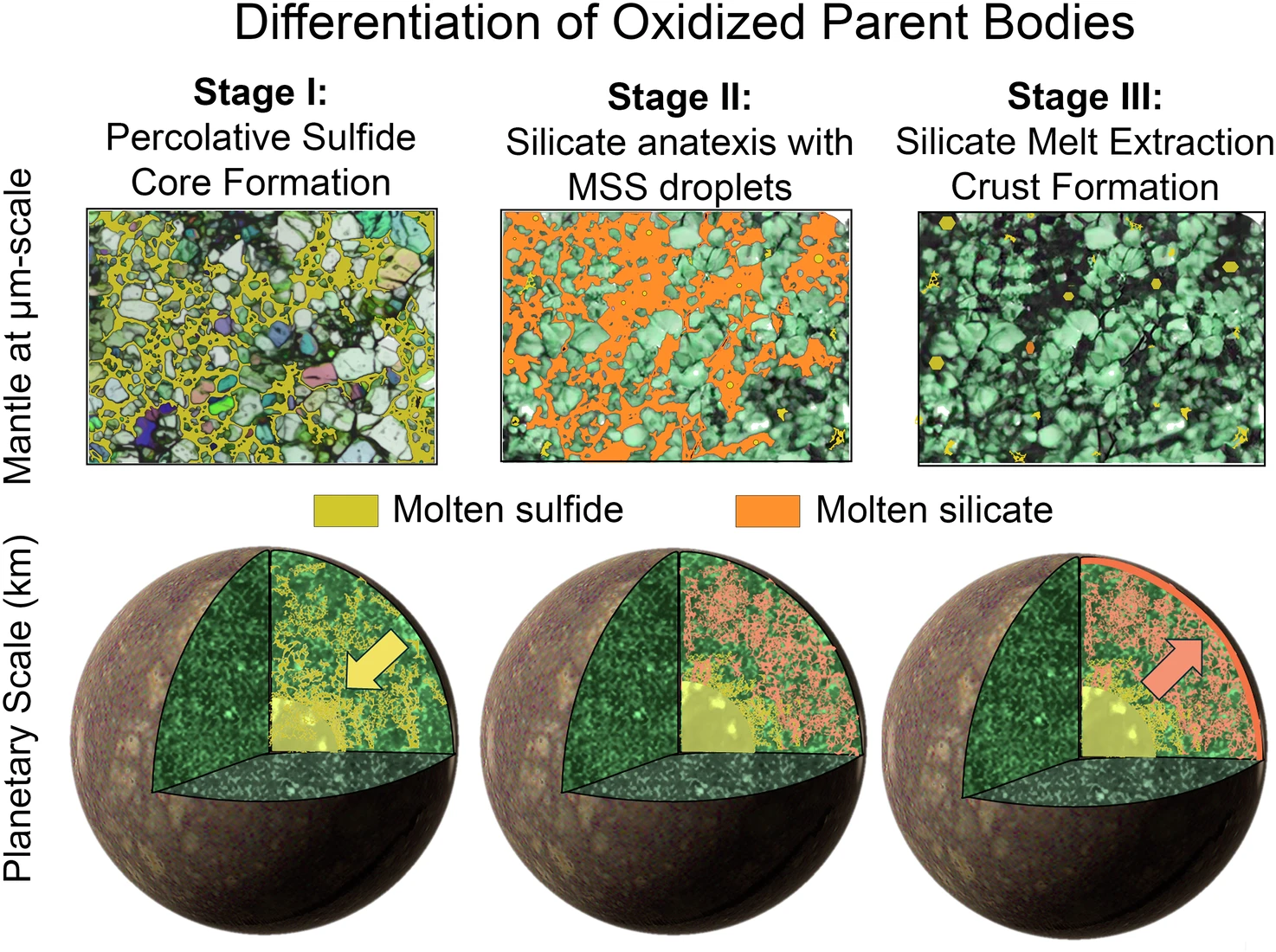🥚 Mars' core smells like rotten eggs
Follow us on Google News (click on ☆)
Planets like Mars are structured in distinct layers, with a core at the center. This stratification, called differentiation, results from the separation of elements by density. The heaviest elements, such as iron and nickel, migrate to the center, while lighter ones remain on the surface.

Traditionally, it was thought that core formation required a fully molten planetary interior. However, Mars challenges this assumption with a core formed in just a few million years. This speed suggests a different mechanism than Earth's.
A team of researchers conducted high-temperature experiments to simulate the conditions of Martian core formation. They discovered that molten sulfides could move through solid rocks, accelerating core formation. This finding sheds new light on planetary formation processes.
Scientists also analyzed meteorites to validate their results. They found traces of platinum-group metals, confirming their hypothesis. These rare elements serve as markers to trace the path of sulfides toward the core.
This study is not limited to Mars. It could apply to other celestial bodies formed under similar conditions. Sulfur-rich cores, like Mars', might be more common than previously thought. Sulfur, with its characteristic rotten egg smell, thus marks the history of these planets.

Initially (stage I), the core-forming assemblages were mainly composed of iron and nickel sulfides.
These sulfides began melting around 800°C (1472°F) and migrated toward the center to form a core of Fe and Ni sulfides.
Next (stage II), silica began melting, carrying immiscible sulfide droplets with it.
These droplets and molten silica then rose to form the crust (stage III).
The oxidized parent mantles thus lost some of their aluminum-26, forming mantle restites.
The sulfide core could have crystallized into a small nickel-rich inner core and a large outer core composed of solid monosulfide.
Upon cooling, the latter would have separated into troilite and pentlandite.
The results of this research, published in Nature Communications, open new perspectives on planet formation. They show that cores can form quickly, even in partially solid environments.
Why is Mars' core so different from Earth's?
The composition and formation speed of Mars' core differ significantly from Earth's. This divergence is explained by the unique conditions of Mars' formation.
Mars formed in a region of the protoplanetary disk where sulfur was abundant. This element facilitated rapid core formation by allowing heavy metals to migrate more easily.
Unlike Earth, Mars did not experience complete melting of its interior. Sulfides could accumulate at the center without requiring extreme heat, speeding up the process.
This difference in formation has major implications. It explains why Mars lost its magnetic field earlier than Earth, affecting its climate evolution and potential habitability.